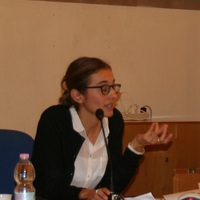Carlotta Franceschelli
Blaise Pascal University, Department of History, Faculty Member
Research Interests:
Ostra was a settlement in the hinterland of the colony of Sena Gallica (Senigallia), on an alluvial terrace on the left of the river Misa. It was born as a village in the second half of the third century BC, after the Lex Flaminia de agro... more
Ostra was a settlement in the hinterland of the colony of Sena Gallica (Senigallia), on an alluvial terrace on the left of the river Misa. It was born as a village in the second half of the third century BC, after the Lex Flaminia de agro Gallico et Piceno viritim dividundo, and became a municipium during the first century BC. From this moment on, Ostra started implementing an urban planning strategy, by building a quite regular road network along with several water infrastructures. The first signs of a "crisis" became visible during the fourth century AD, but Ostra was abandoned only between the seventh and the eighth centuries. Since 2006, the University of Bologna has been conducting archaeological investigations on the site, with the cooperation of the University of Clermont-Ferrand. The paper presents the different water supply systems of Ostra and the main contexts of use of water. What emerges from this survey is a picture characterised by the coexistence of different supply systems, such as wells, catchment of irregular water sources and aqueducts. On this basis, some general reflections are made on the function of aqueducts and on the relationships between water and cities in the Roman world.
Research Interests:
Research Interests:
Research Interests:
in A. Baroni, E. Migliario (a c.), Per totum orbem terrarum est...limitum constitutio. II. Confinazioni d'altura, Roma 2019, pp. 69-88
